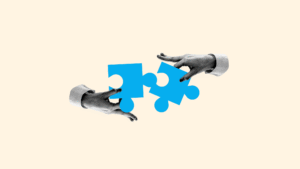In conversations with marketing and brand managers, they often share struggles about getting the C-suite to understand the critical value of the brand(s) they oversee. Surprisingly, many executives still equate brand with logo, or consider the brand to be window dressing, like a campaign or even just a label applied to something.
A brand is much more, but how can you help build more agreement and less debate around it? Maybe one challenge in understanding what brand really means is connected to the inherent tension or push-pull of managing a brand: growth vs. protection. Growth inherently means pushing boundaries, not being restrained, and reaching new heights. This is often where executives, and especially sales teams, naturally align. Protection, on the other hand, means holding things close, keeping watch, and careful maintenance of the brand. To thrive, your brand needs equal attention to both.
Your brand isn’t a name or a symbol, it’s how it interacts with the world – via your employees as well as customers and prospects. At a deeper level, your brand is the story of how each customer or employee interacts with you, and what that story means to them. When people see themselves reflected in the stories you share and promote, they want to be part of your brand, too. That’s the growth, that’s the multiplier.
Delivering a consistent, real-life experience that aligns with those stories is where protection comes in. If the experiences don’t live up to the brand promise, it will ultimately hinder or reverse that growth very quickly. Just as the best stories are told time and time again, the best brands endure. Their inherent story continues to resonate, because their real-world delivery consistently reflects that story. The campaigns and details may change, but the core beliefs and promises remain constant and recognizable.
In responding to a crisis, or trying to get a product to market quickly, there is tremendous pressure and temptation to cut corners and make fast decisions because “it’s different now.” What you save cutting corners, you’ll lose in customer experiences that don’t reinforce the core story or elements of the brand. And those losses can be big, because people often make brand choices based on emotions. It can be one off-brand moment that makes them decide to try somewhere else.



